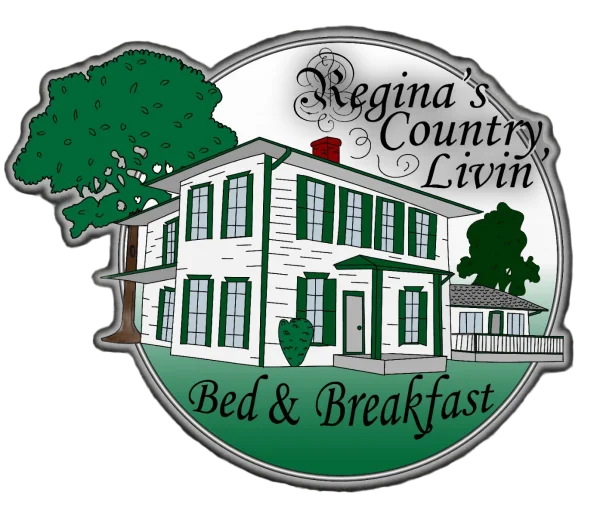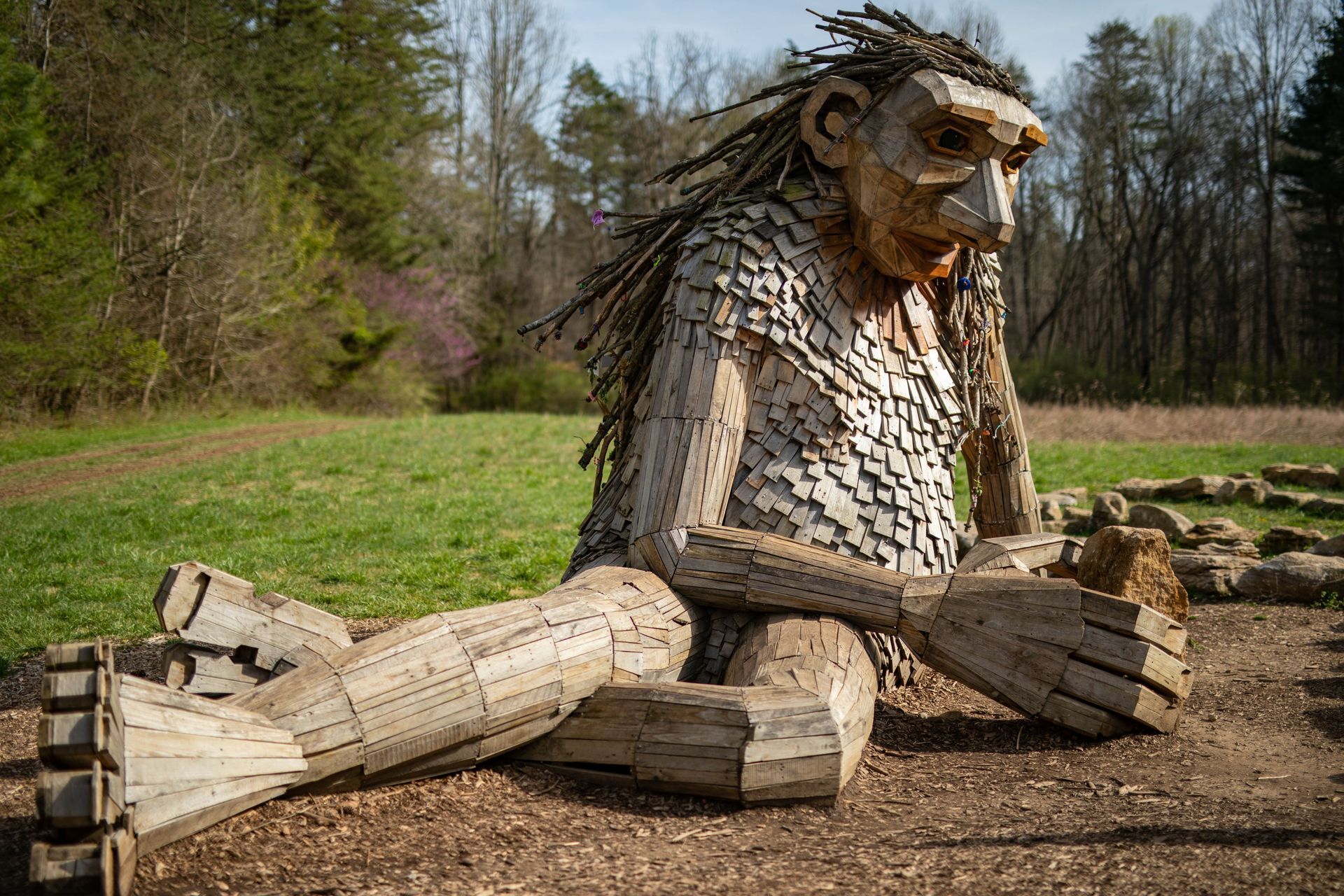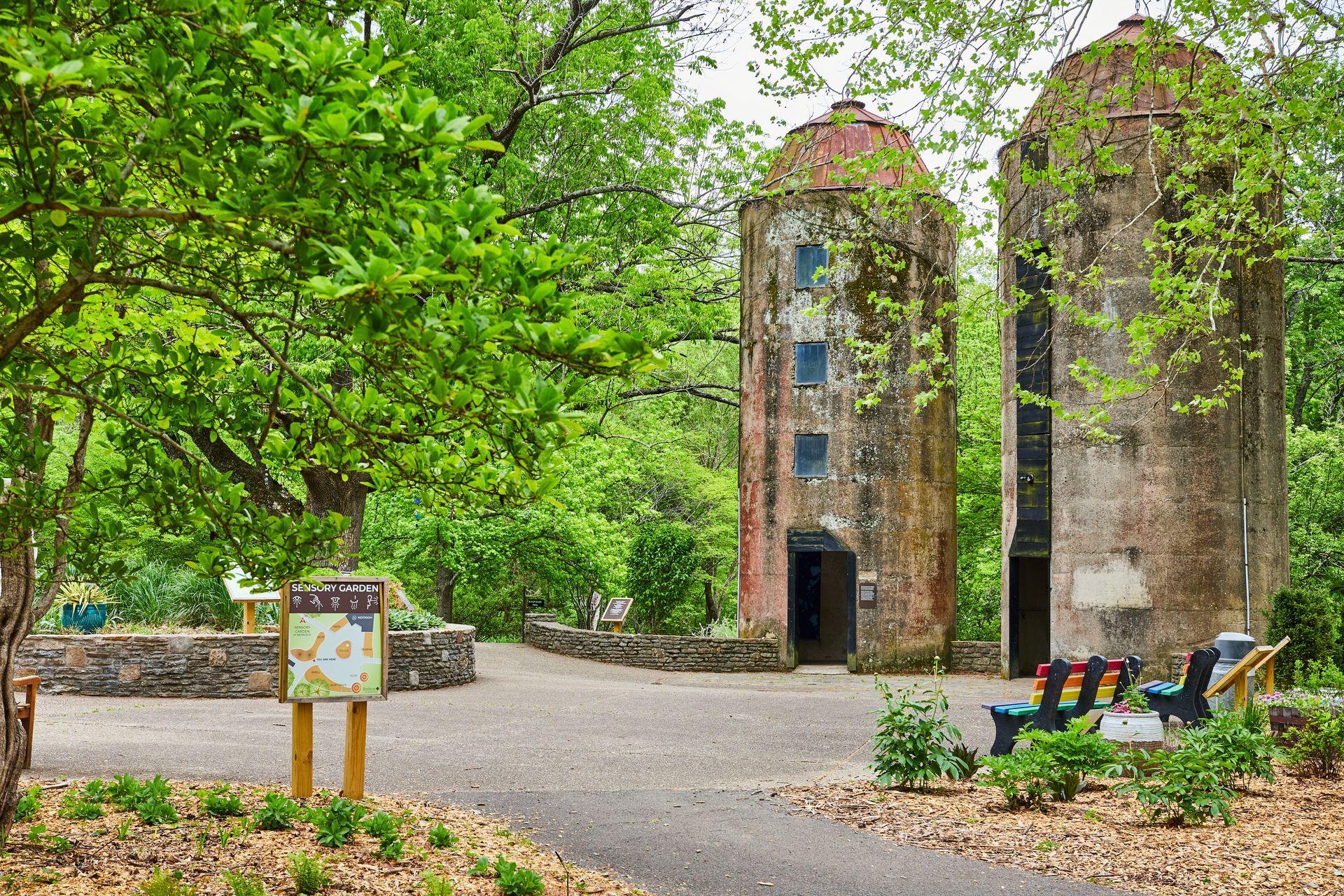A Traveler’s Guide to the Bernheim Arboretum & Research Forest
Sometimes the best experiences don’t require Wi-Fi, ticket scanners, or standing in line behind someone trying to photograph their latte. Just a short drive south of Louisville, Bernheim Arboretum and Research Forest stretches across more than 16,000 acres of Kentucky terrain, inviting visitors to ditch the inbox and soak up something a little more oxygen-rich.
Originally purchased in 1929 by Isaac Wolfe Bernheim—a German immigrant who found his fortune in bourbon—this land once bore the scars of logging and mining. Instead of building a monument to himself, Bernheim turned it into a gift for everyone else.
Today, what was once damaged earth is now a flourishing landscape of native ecosystems, cultivated gardens, artistic installations, and over 40 miles of hiking trails. Top it all off with some enormous wooden giants (we’ll get to that), and it’s a trip worth making.
Nature's Symphony
Sed ut perspiciatis unde omnis iste natus error sit
From Bourbon Barrels to Biodiversity: A Brief History
Isaac Bernheim wasn’t your average philanthropist. After establishing the successful I.W. Harper bourbon brand, he decided to invest in trees rather than skyscrapers or naming rights. Lots of trees.
He brought in the
Olmsted Brothers—the same firm behind Central Park—to help design the arboretum. What followed was decades of ecological restoration and careful cultivation. The forest opened to the public in 1950 and has been quietly impressing visitors ever since.
So, What’s Actually Here?
Let’s start with the basics. Bernheim has two main components: the 600-acre arboretum and 15,000 acres of protected forest land. The former features an enormous variety of labeled trees and shrubs, all neatly curated for those who love botany, landscaping, or simply knowing what kind of tree they’re standing under.
The other 15,000 acres? Imagine creeks, glades, knobs, and shaded valleys. Beech-maple forests one minute, sunny meadows the next. You could wander for days and still find surprises.
If you're short on time, don’t miss these standouts:
- The Forest Giants: Danish artist Thomas Dambo used recycled wood to build
three colossal sculptures scattered throughout the arboretum. They’re part troll, part sculpture, and great for pictures.
- Canopy Tree Walk: Suspended 75 feet above the forest floor, this boardwalk offers panoramic views without requiring a single climbing rope.
- The Edible Garden: Four acres of organic fruits, veggies, herbs, and even edible flowers—all managed using sustainable practices. (You can’t snack, but you can enjoy the view as you walk through.)
- The Sensory Garden: Designed to engage all five senses. It's as scenic as it is interactive—even the smells are amazing.
Nature's Symphony
Sed ut perspiciatis unde omnis iste natus error sit
Art, Science, and the Occasional Golden Eagle
Bernheim isn't just about hiking trails and selfies with wooden giants. It’s also a living laboratory and a creative playground.
Every year, artists from around the world come here to participate in the Artist in Residence Program, creating site-specific works inspired by the landscape. You’ll find sculptures in unexpected places, blending art into the environment without upstaging the trees.
On the science side, the forest is a hub for ecological research. Biologists study everything from the survival rate of oak seedlings to the behavior of bats and the migratory path of golden eagles. One eagle, affectionately named Athena, makes a return visit to Bernheim each winter. How neat is that?
Research, education, and conservation are all part of the mission. So if you think of this place as “just a big park,” think again.
Trail Tips, Timing, and What to Know Before You Go
With more than 40 miles of trails, you can easily match your pace to your mood. Feeling ambitious? Try the Millennium Trail, a 13.3-mile loop that earns its name. Looking for something low-effort with high reward? Several short paths near the visitor center offer great views without the cardio.
- Dogs are welcome on most trails, but you’ll need to skip the arboretum and certain buildings.
- Seasons matter. Spring is for wildflowers, fall is a color show, and summer is full bloom. Be sure to pack plenty of water.
- Admission is donation-based ($15 per vehicle is suggested). You won’t be asked to show a ticket, but generosity keeps the lights on and the trails maintained.
Where to Crash After Your Day in the Forest
After a day spent exploring tree-lined paths and communing with large wooden giants, you’ll want a place that isn’t just “nearby” but feels like an extension of the Bernheim experience. That’s where Regina’s Country Livin’ Bed & Breakfast steps in.
Just minutes from the forest, our top-notch lodging offers the kind of rest you can’t get at a chain hotel. If you appreciate warm hospitality, peaceful views, and breakfasts that actually taste like someone cooked them just for you, we’re you’re stop.
We’re the perfect follow-up to a day outdoors. Kick off your hiking boots, relax on the porch, and let the world slow down for a bit. Your phone might even stop buzzing, and honestly, isn’t that the dream?
Before You Go: A Few Final Thoughts
Bernheim Arboretum and Research Forest is not your average tourist attraction. You won’t find roller coasters or souvenir snow globes. What you will find is space. Space to wander, breathe, wonder, and reset.
Whether you’re into botany, birdwatching, or just want an excuse to walk under trees taller than your worries, this place delivers in spades. Bring good shoes, an open mind, and maybe a snack. Then let the forest do the rest.
And when your legs are tired and your camera is full, head back to Regina’s Country Livin’ Bed & Breakfast for a night that feels like home. Book your stay today and let the great outdoors be your next destination.


